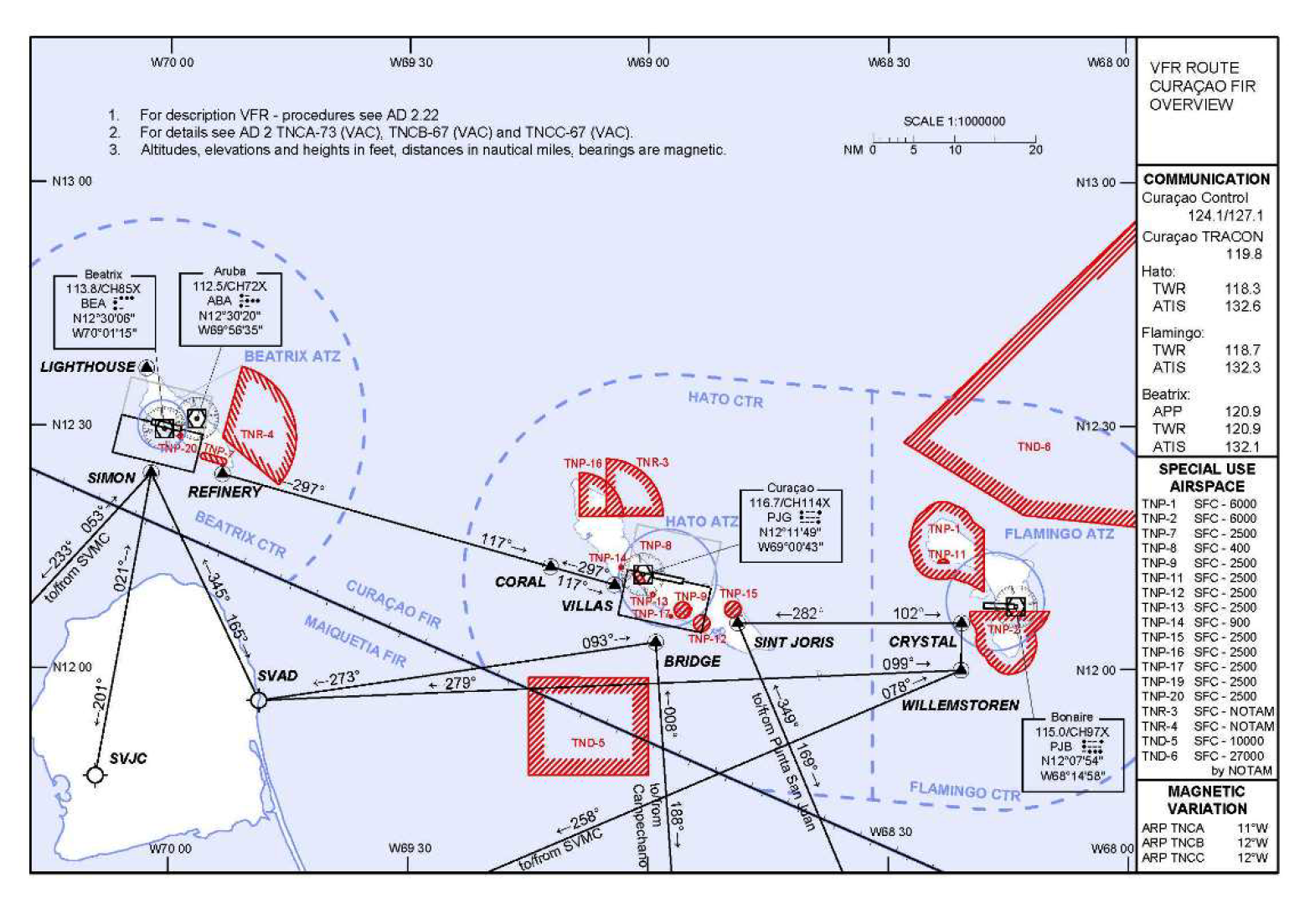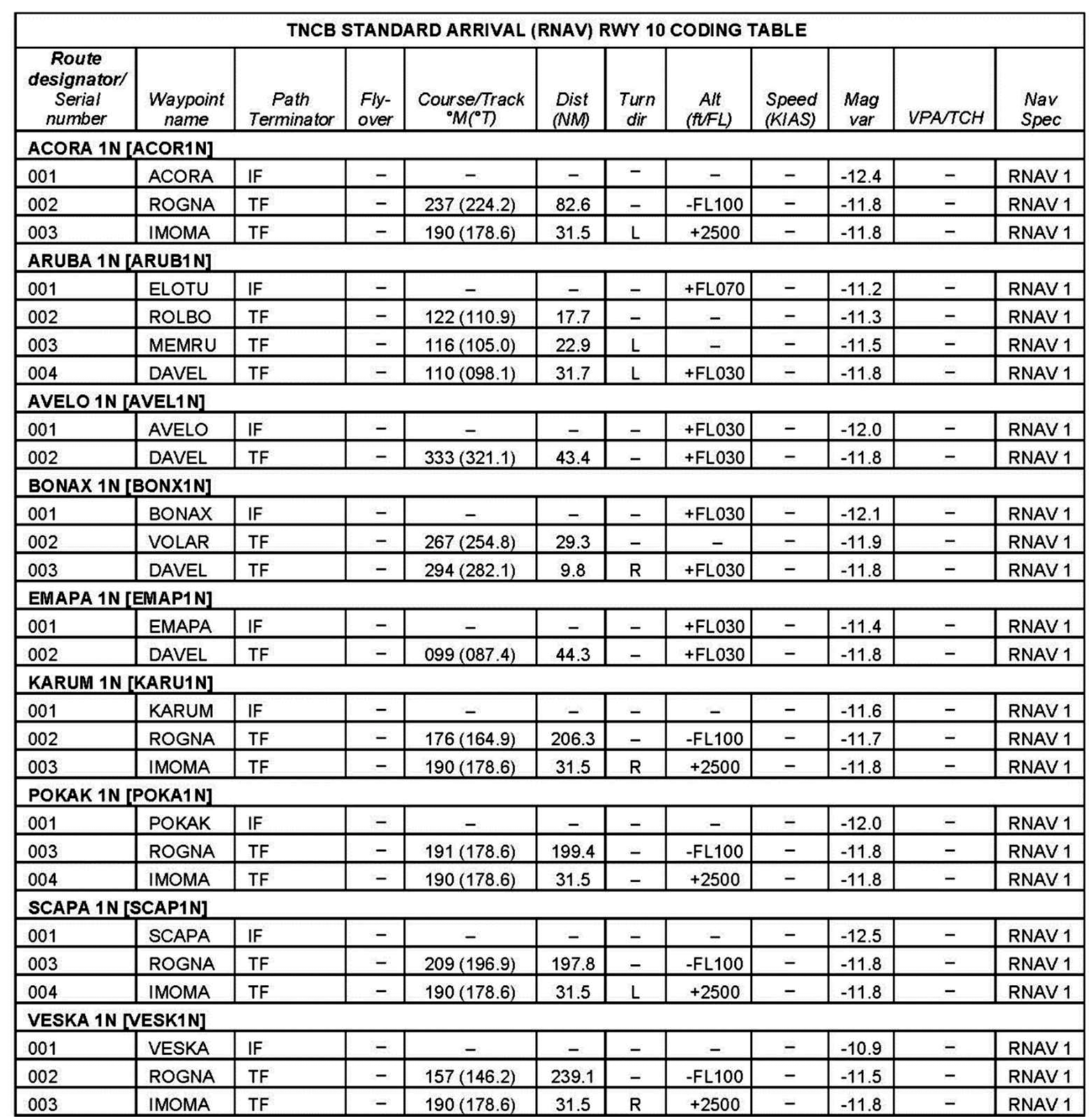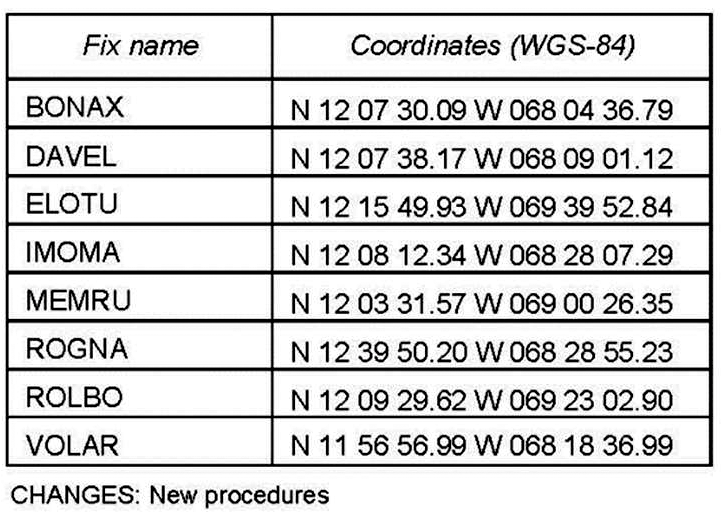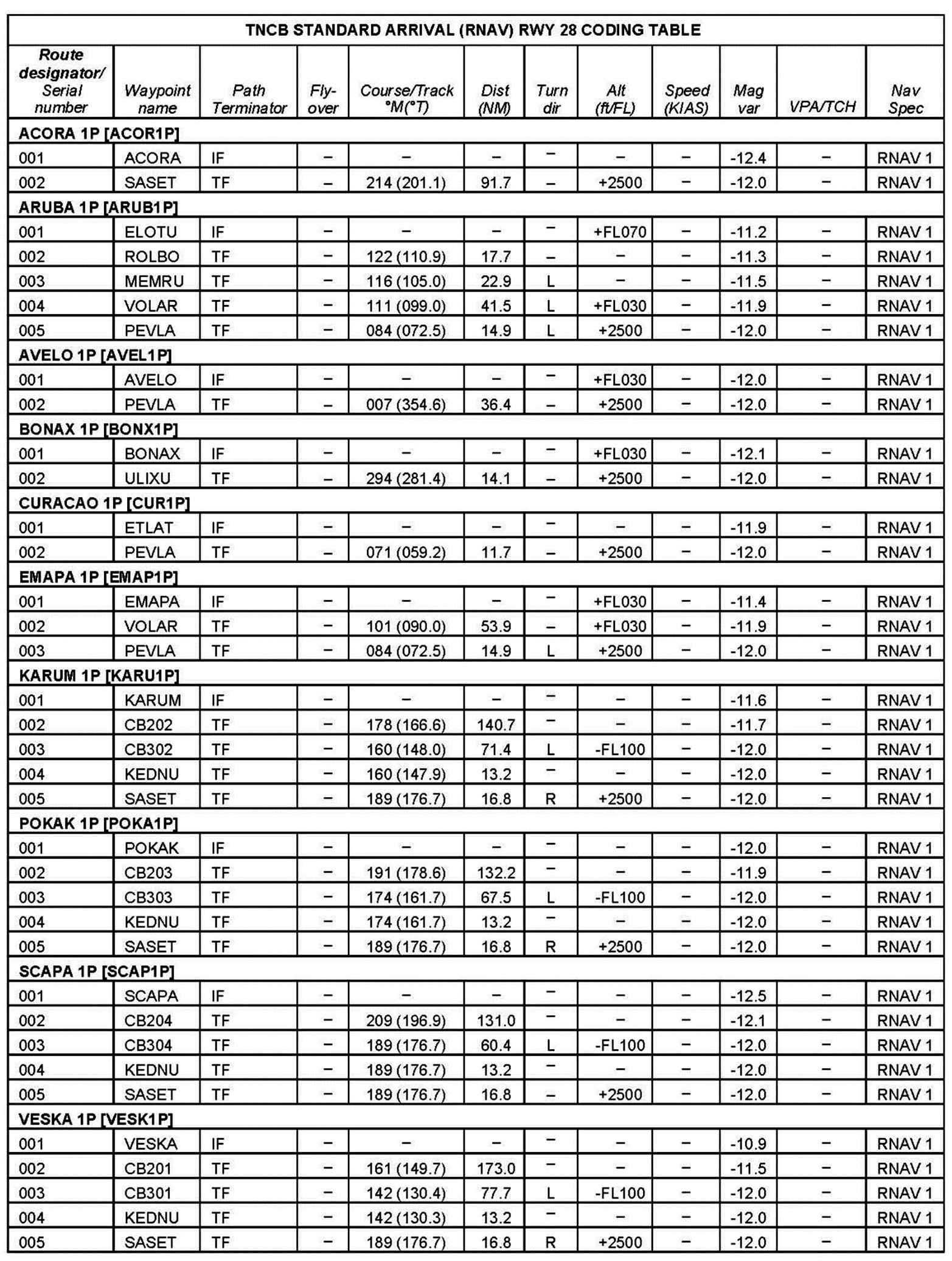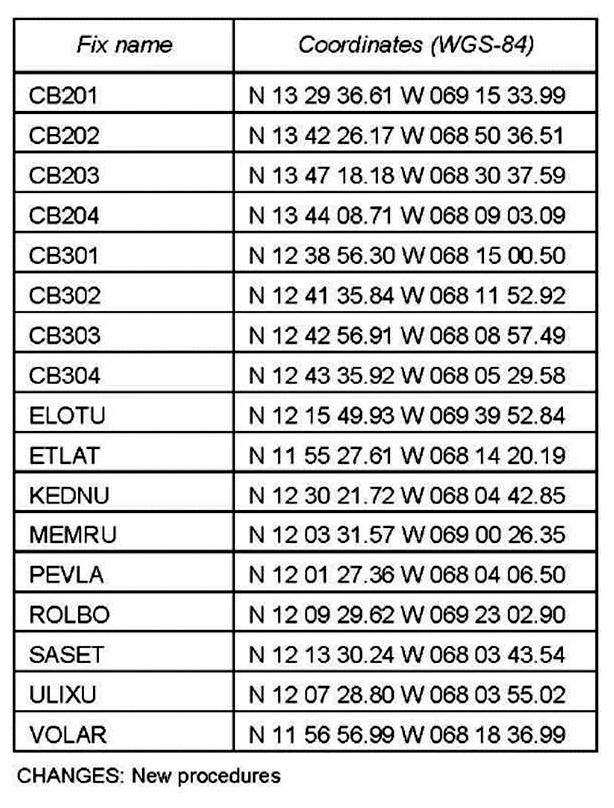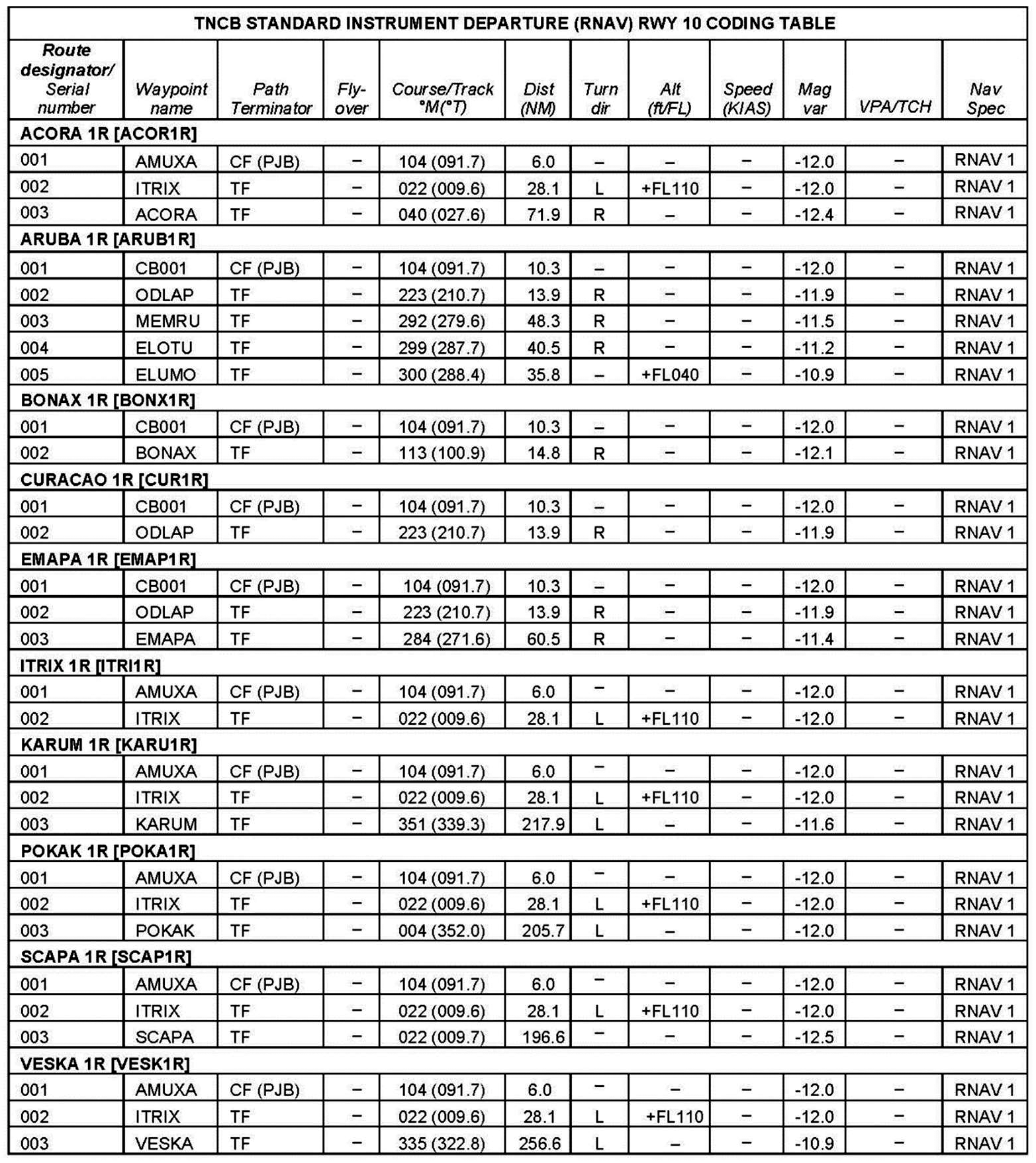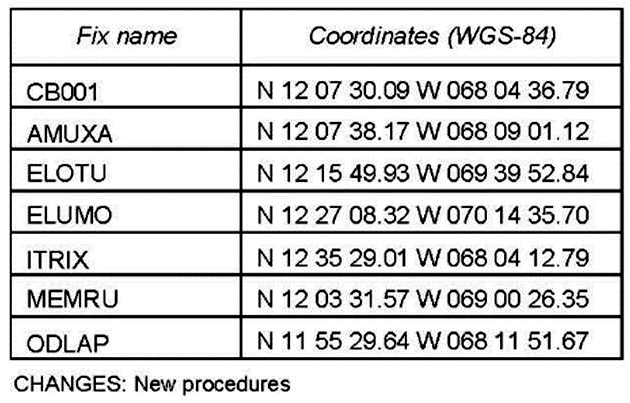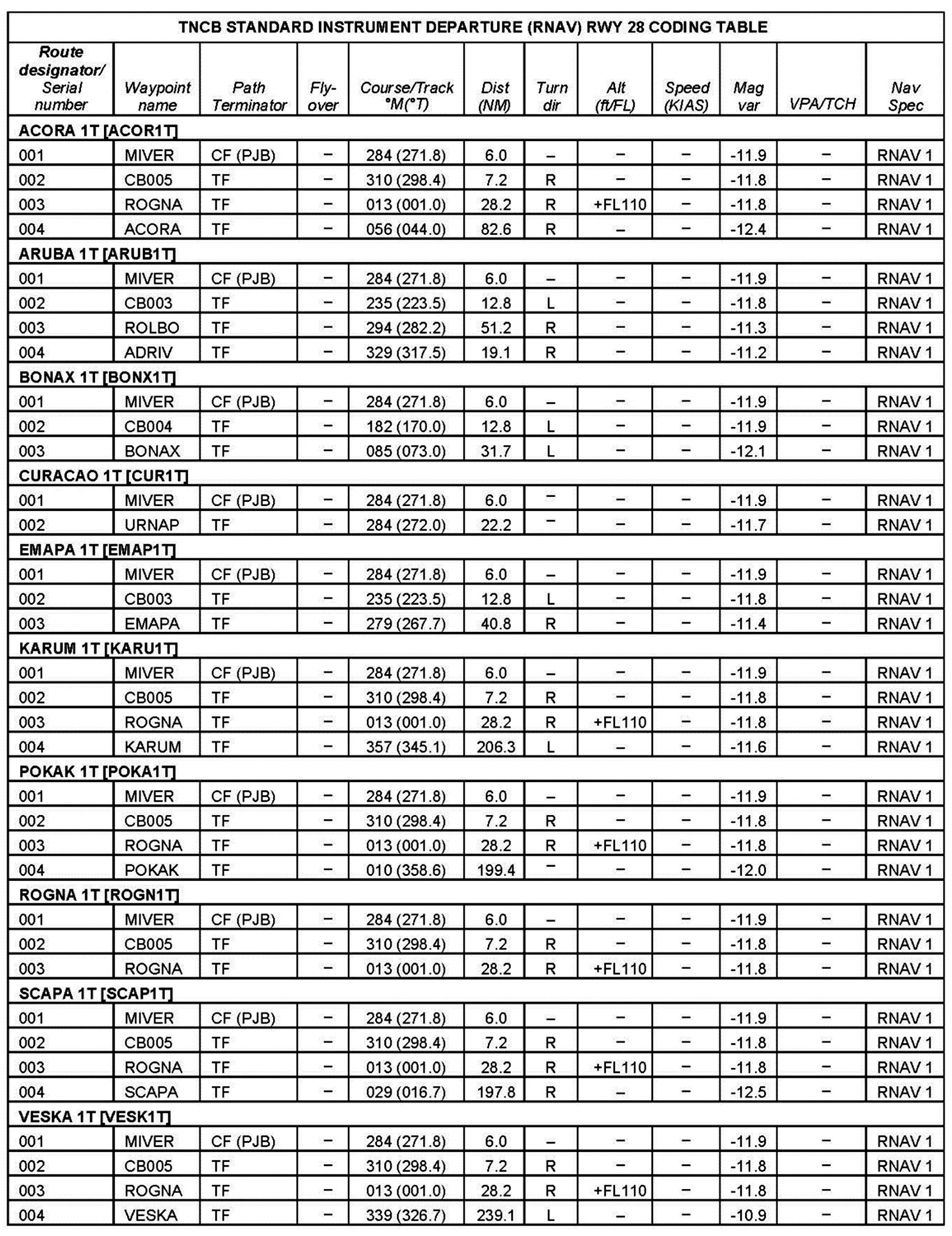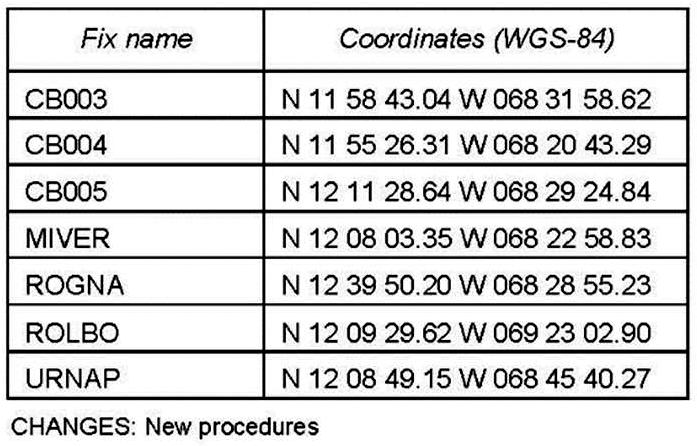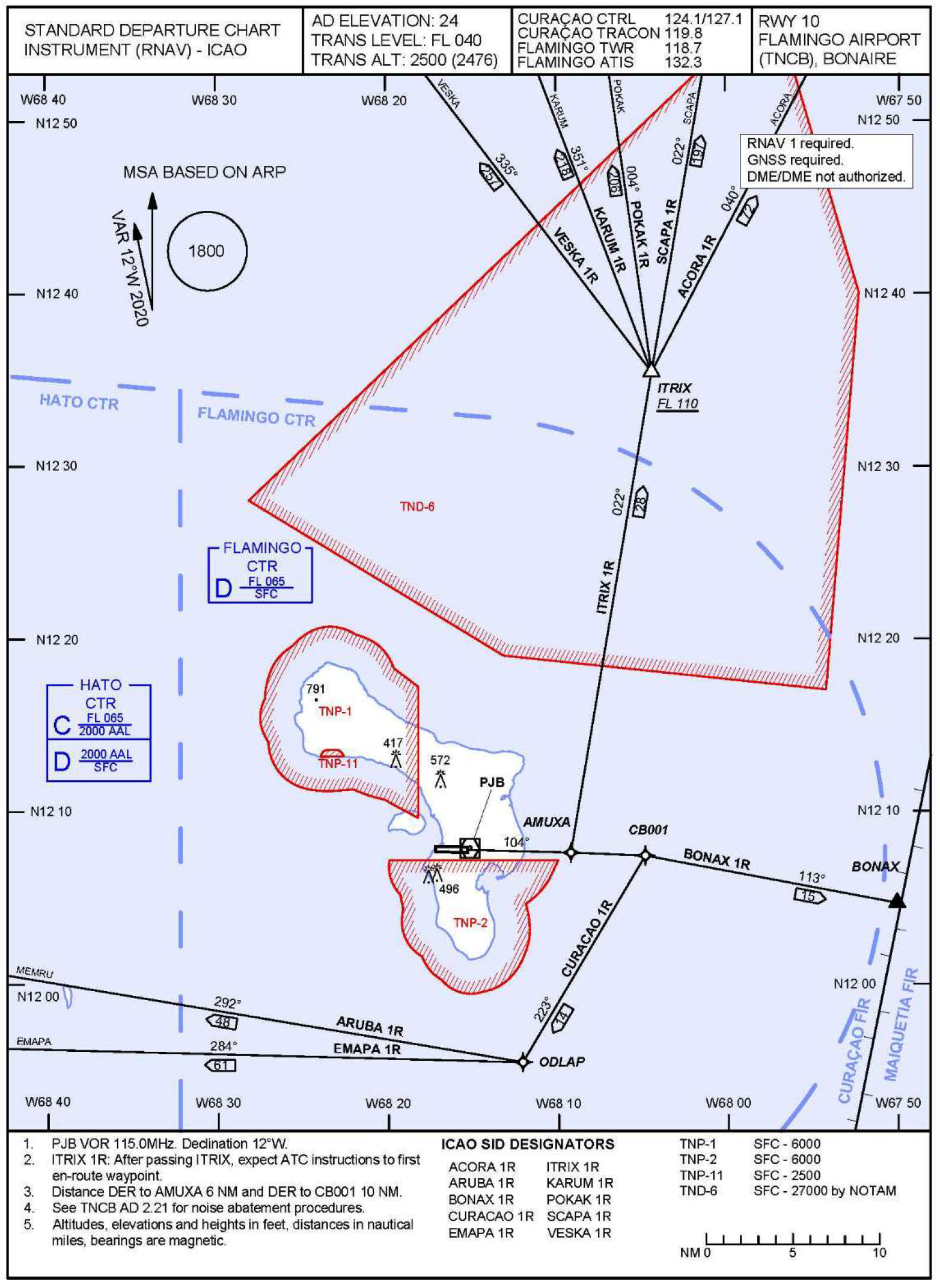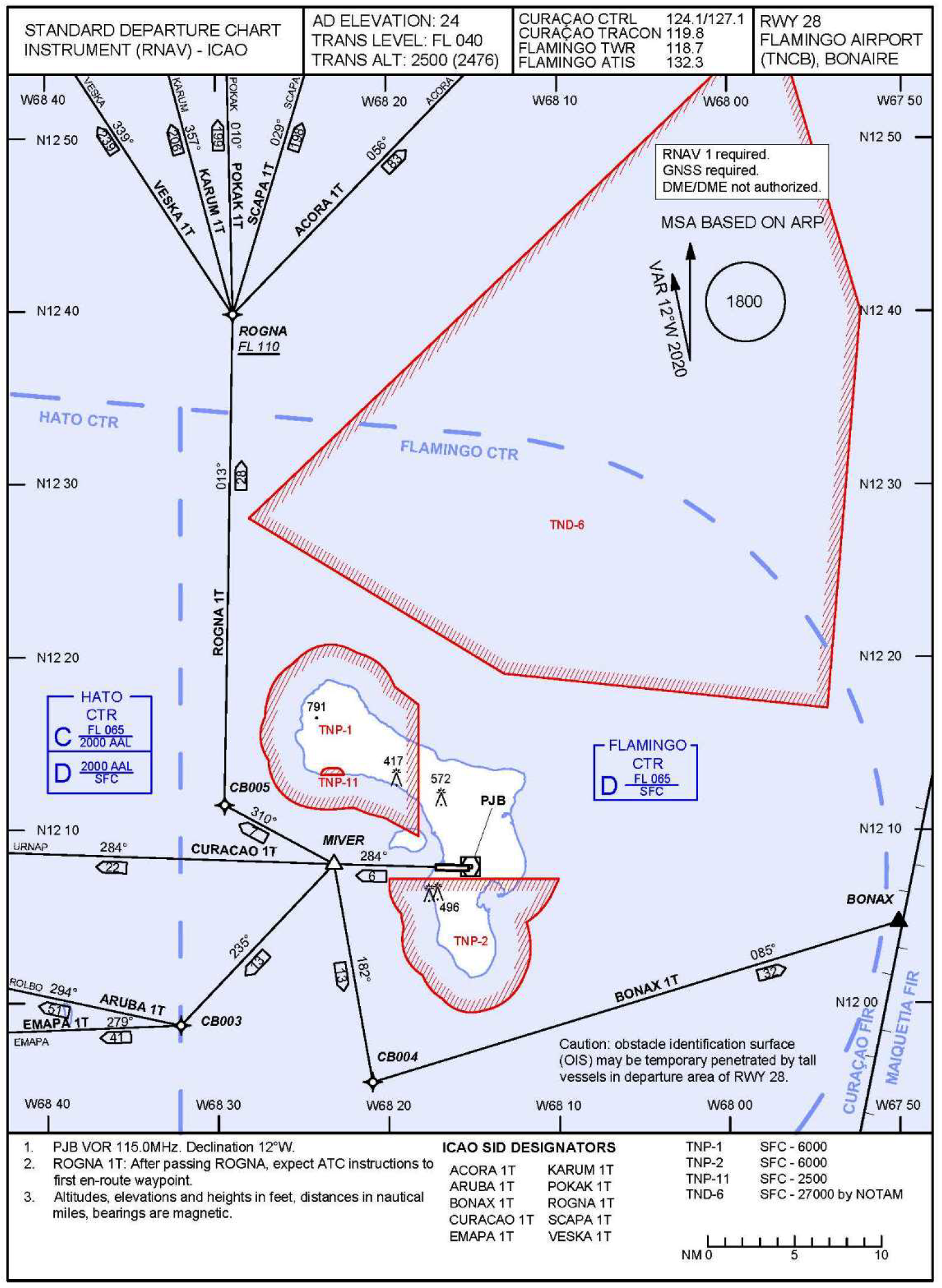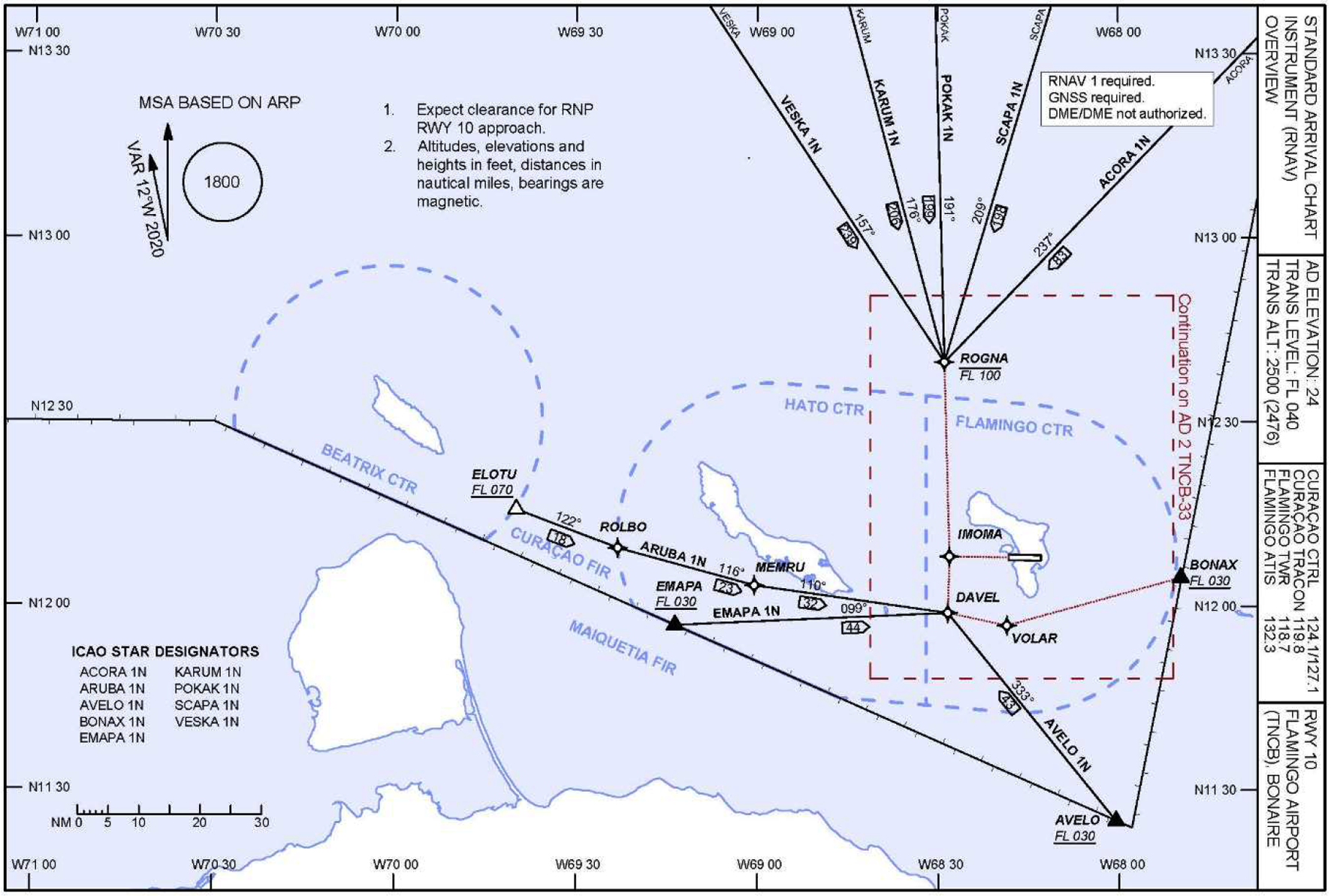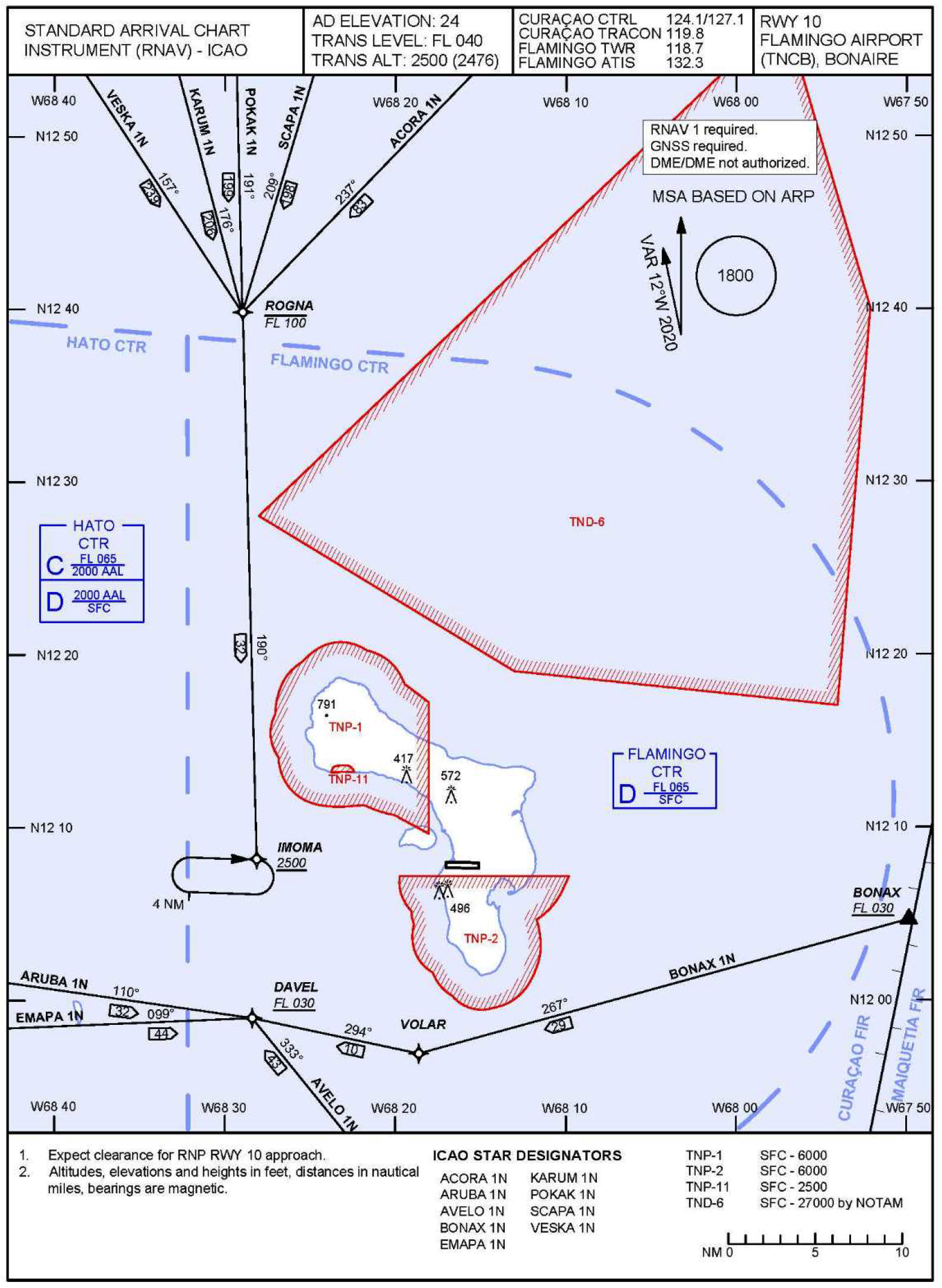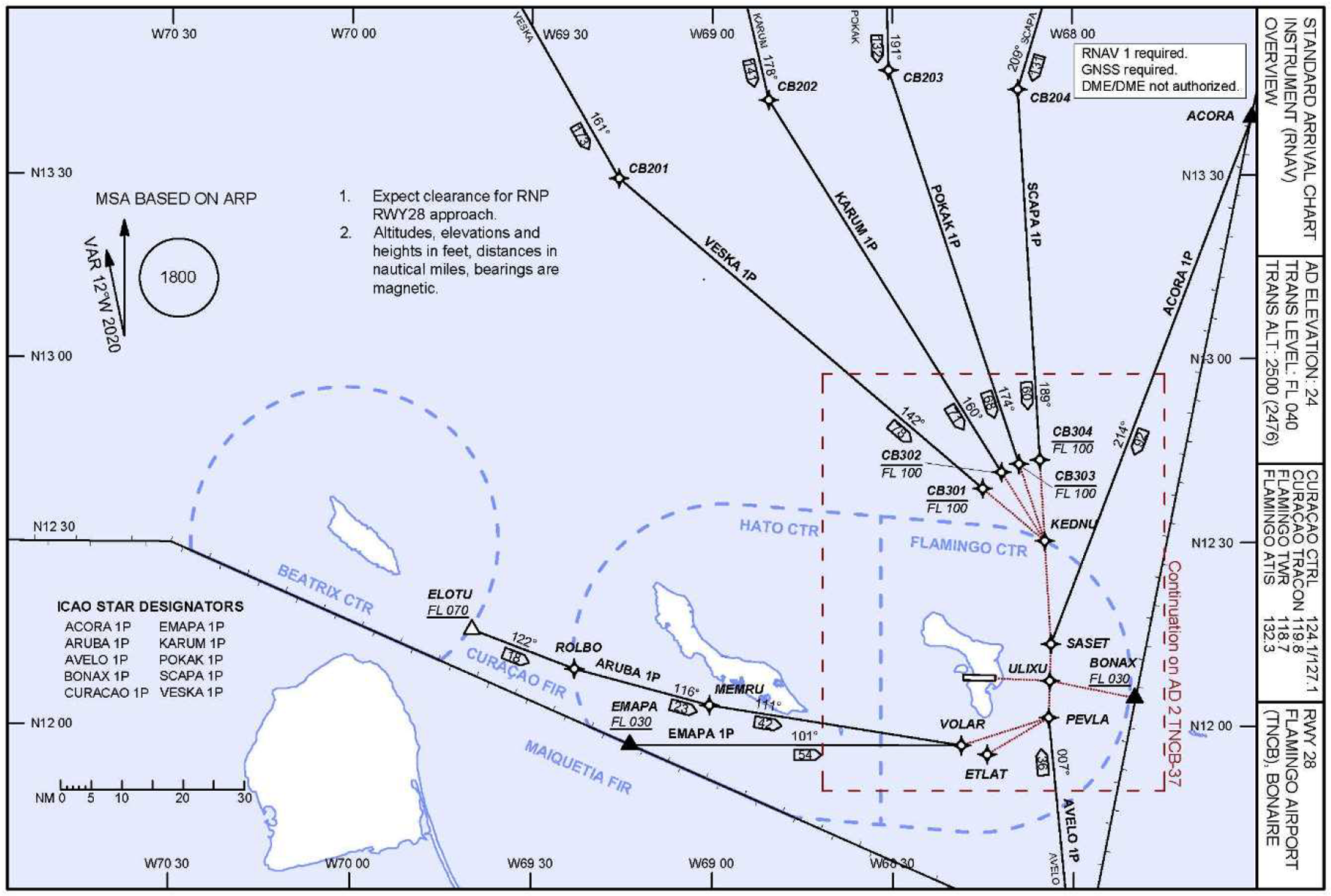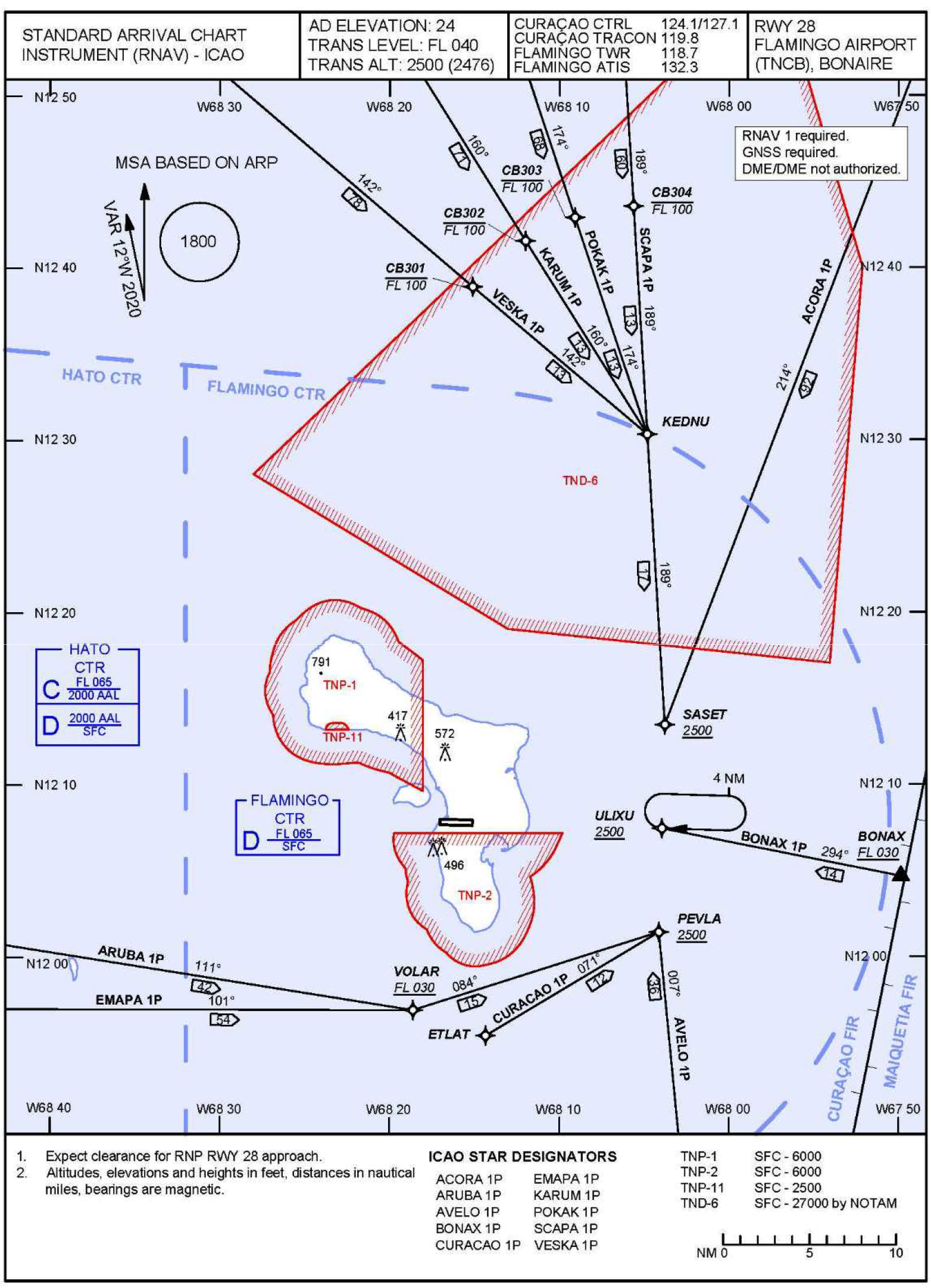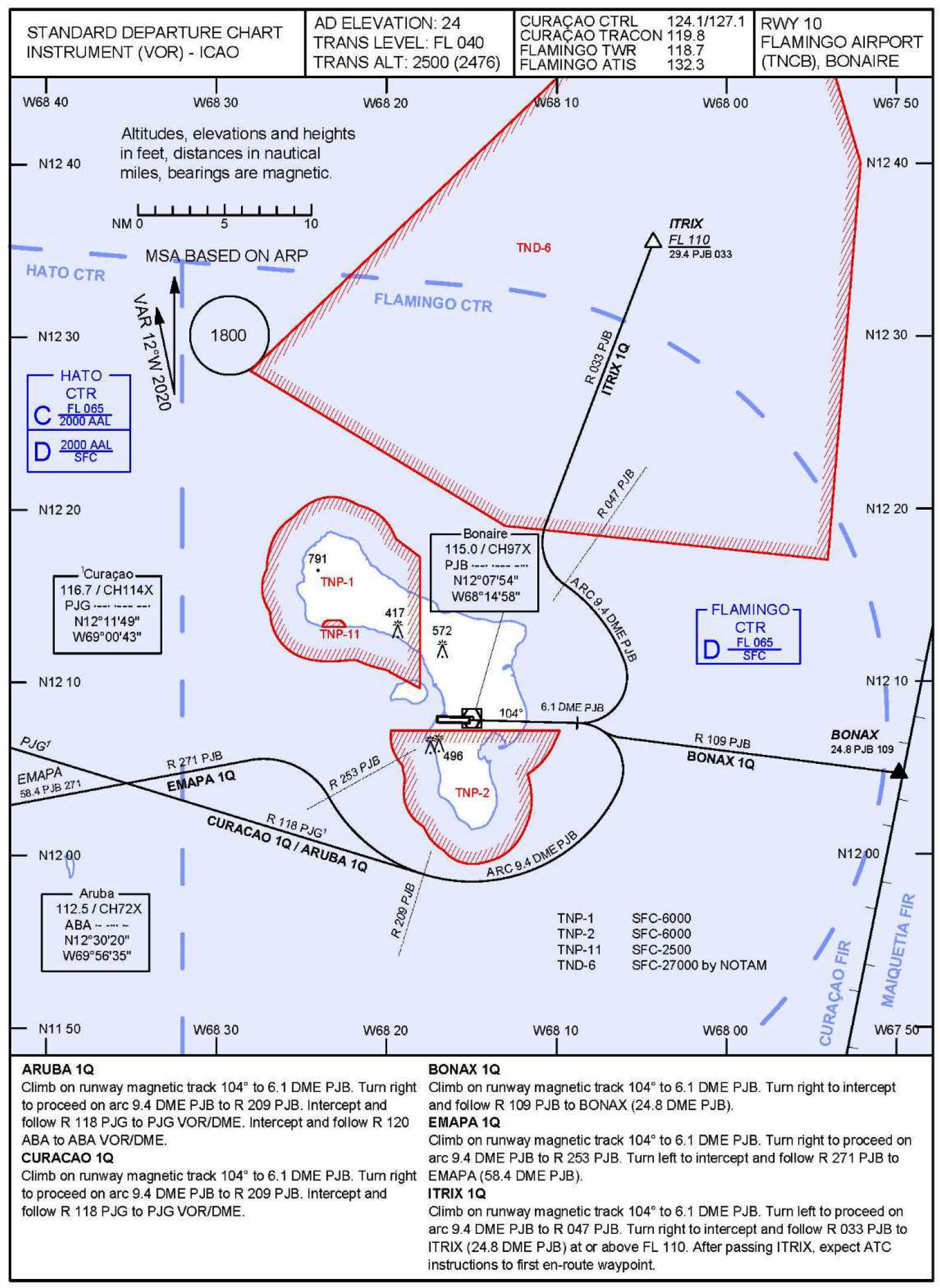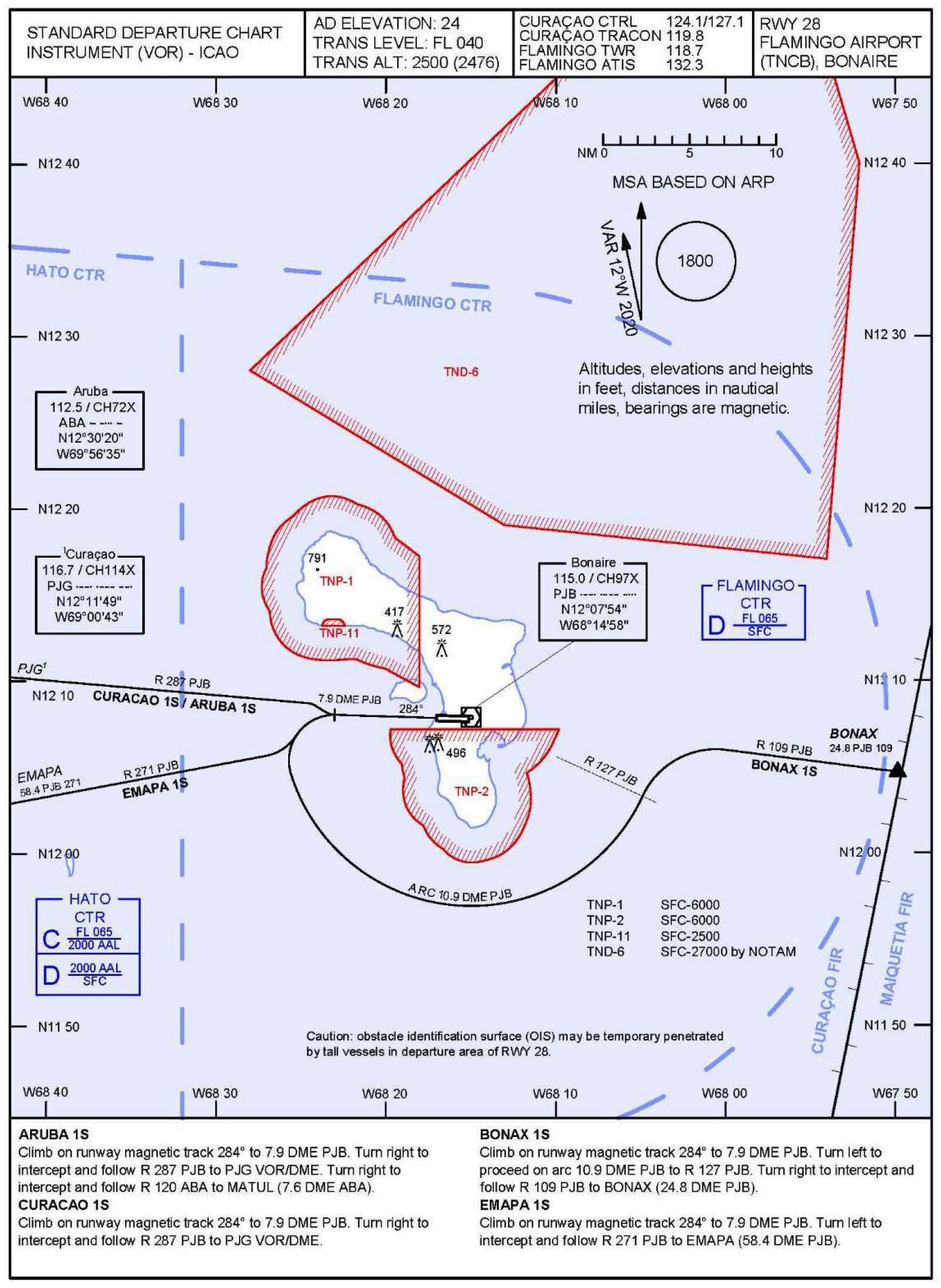12. Visual approach chart Flamingo Airport (TNCB)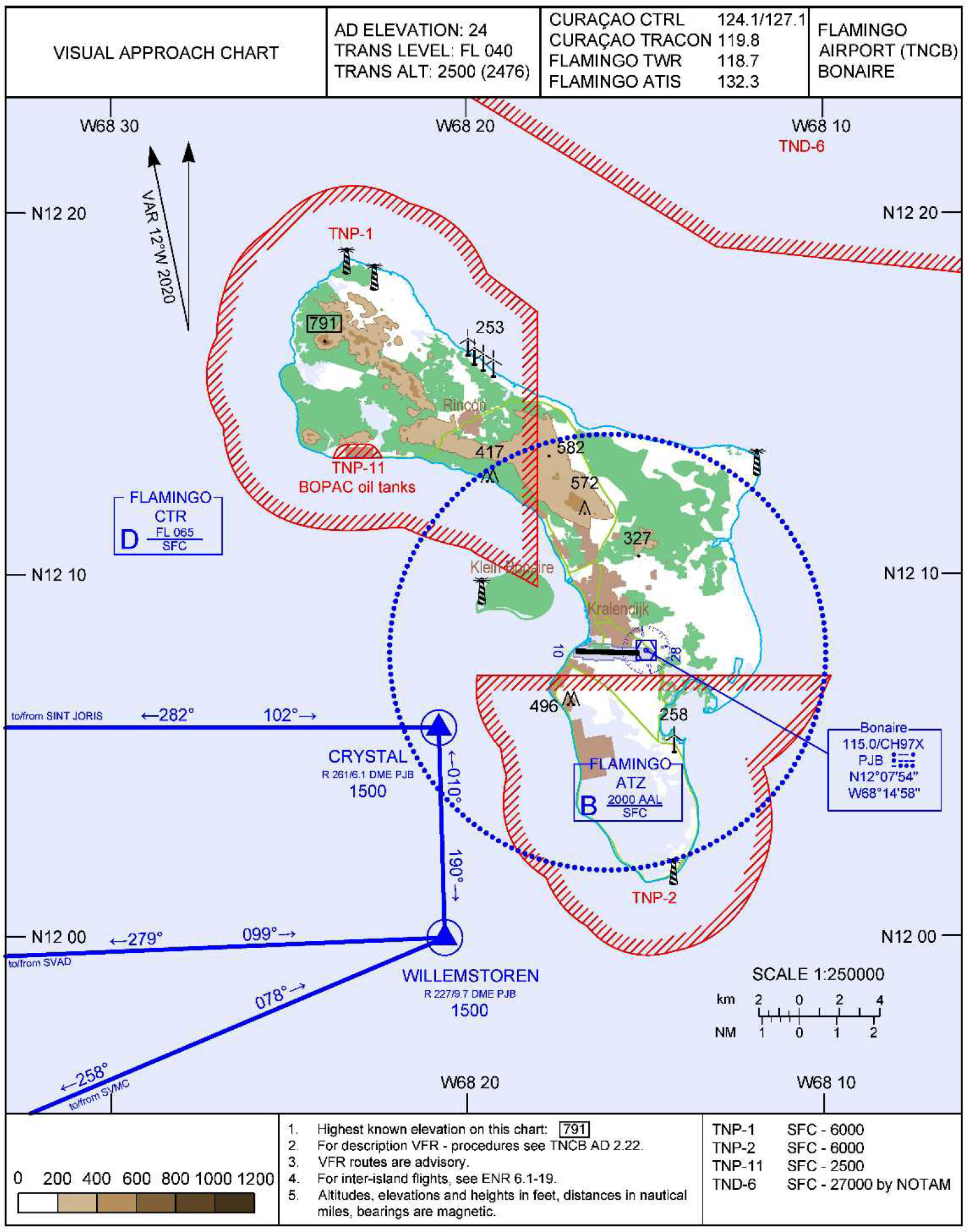
VFR PROCEDURES FLAMINGO INTERNATIONAL AIRPORT
General
-
1. All VFR flights intending to operate in the Flamingo CTR shall submit a flight plan
-
2. Flamingo CTR has been designated as controlled airspace (class D).
-
3. Flamingo ATZ has been designated as controlled airspace (class B).
-
4. Flights within the Flamingo CTR shall maintain two-way radio communication with Curaçao
TRACON or Curaçao Control. Curaçao TRACON active 1100-2300 UTC. Outside these hours,
contact Curaçao Control.
-
5. Flights within the Flamingo ATZ shall maintain two-way radio communication with Flamingo
TWR.
-
6. A clearance is required from Curaçao ACC for all VFR operations in the CTR.
-
7. VFR flights shall be carried out via the published VFR routes unless otherwise instructed
by ATC or on pilots’ request.
-
8. Pilots should adhere to the VFR approach and departure procedures and traffic circuit
as depicted.
-
9. Built-up areas shall be avoided as much as possible.
-
10. Prior permission is required for training and test flights.
-
11. Touch-and-goes are subject to traffic permitting conditions.
-
12. VFR flights are not allowed between sunset and sunrise.
VFR departure procedures
Pilots must have obtained start-up approval from ATC before starting engines. A request
for start-up shall be made to Flamingo TWR, approval for start-up will either be issued
immediately or at a specified time depending on traffic.
Taxiing on taxiways: pilots of aircraft intending to taxi on the taxiways shall obtain
an approval from Flamingo TWR.
After take-off, aircraft shall maintain runway track till 2500ft. Departing aircraft
shall leave the circuit by one of the VFR routes indicated on the chart, unless otherwise
instructed.
VFR departure to the south
VFR flights to the south shall leave the Flamingo CTR via CRYSTAL to WILLEMSTOREN
at 2500ft AMSL or above, unless otherwise instructed.
Report when passing WILLEMSTOREN.
While in the Flamingo CTR, VFR flights shall monitor the Curaçao ACC frequency.
VFR departure to the east
VFR flights to the east shall leave the Flamingo CTR via a track maintaining RWY heading,
at 2500ft AMSL or above, unless otherwise instructed.
Report when passing 2500ft.
While in the Flamingo CTR, VFR flights shall monitor the Curaçao ACC frequency.
VFR departure to the west
VFR flights to Curaçao, Aruba and beyond shall leave the Flamingo CTR via CRYSTAL
at 2500ft AMSL or above, unless otherwise instructed.
Report when passing CRYSTAL.
While in the Flamingo CTR, VFR flights shall monitor the Curaçao ACC frequency.
Traffic to Aruba shall expect routing via CRYSTAL, SINT JORIS, CORAL to REFINERY.
VFR departure to the north
VFR flights to the north shall contact Curaçao TRACON or Curaçao Control for instructions.
While in the Flamingo CTR, VFR flights shall monitor the Curaçao ACC frequency.
VFR approach procedures
Contact Curaçao ACC at least 5 minutes before crossing the CTR boundary for clearance
to enter the CTR.
Enter the CTR via the published VFR routes, unless otherwise instructed.
VFR approach from the south
VFR flights from the south shall contact Curaçao ACC at least 5 minutes prior to crossing
the CTR boundary for clearance to enter the CTR.
Enter the CTR via the published VFR route, unless otherwise instructed.
Report passing WILLEMSTOREN at 1500ft AMSL.
Join the circuit as instructed by ATC.
While in the Flamingo CTR, VFR flights shall monitor the Curaçao ACC frequency.
VFR approach from the east
VFR flights from the east shall contact Curaçao ACC at least 5 minutes prior to crossing
the CTR boundary for clearance to enter the CTR and for instructions.
Report passing WILLEMSTOREN at 1500ft AMSL.
Join the circuit as instructed by ATC.
While in the Flamingo CTR, VFR flights shall monitor the Curaçao ACC frequency.
VFR approach from the west
VFR flights from Curaçao and beyond shall remain on the Curaçao ACC frequency until
crossing the CTR boundary
Enter the CTR via the published VFR route, unless otherwise instructed.
Report passing CRYSTAL at 1500ft AMSL.
Join the circuit as instructed by ATC.
While in the Flamingo CTR, VFR flights shall monitor the Curaçao ACC frequency.
VFR approach from the north
VFR flights from the north shall contact Curaçao ACC at least 5 minutes prior crossing
the CTR boundary for clearance to enter the CTR and for instructions.
Descend to 1500ft AMSL and join the circuit as instructed by ATC.
While in the Flamingo CTR, VFR flights shall monitor the Curaçao ACC frequency.
VFR reporting points
|
FIX NAME
|
COORDINATES
|
PJB INTERSECTION FIX
|
|
WILLEMSTOREN
|
115957.69N0682037.76W
|
R 227/9.7 DME
|
|
CRYSTAL
|
120545.84N0682047.41W
|
R 261/6.1 DME
|
|
SINT JORIS
|
120547.72N0684848.51W
|
R 278/33.2 DME
|
VFR traffic circuits
The circuit altitude is 1500ft AMSL.
Maximum speed within the circuit is 130 kts.
The standard circuit is left-hand RWY 10 and right-hand RWY 28.
Pattern legs may be adjusted at ATC discretion depending on traffic conditions.
If not possible to adhere to the circuit, inform ATC as soon as possible.
In case of go around, join the circuit and inform ATC as soon as possible.
Traffic not able to comply with the maximum speed in the traffic circuit shall inform
ATC.
Special VFR
Special VFR flights are only authorized subject to the approval of the unit providing
approach control service to enter the control zone for the purpose of landing or to
take off and depart directly from the control zone provided that:
-
1. the ground visibility is not less 1.500 m;
-
2. separation shall be effected between all IFR flights and special VFR flights;
-
3. separation shall be effective between special VFR flights.
Communication failure procedures
General
Select SSR code 7.600.
VFR outbound
In case of communication failure during VFR departure, adhere to the departure instructions.
VFR flights on assigned routes should leave the CTR via the VFR routes. In case an
off-route flight needs to cross the runway centre line, it should only do so crossing
the airfield midfield at or above FL040 and leave the CTR via the shortest route.
If the flight has been instructed to maintain an intermediate altitude, it shall maintain
that altitude until outside the CTR and proceed/divert to an appropriate aerodrome.
VFR inbound
In case of communication failure before joining the circuit, orbit either south or
north of the airport (depending of track inbound). This is necessary to observe the
aerodrome traffic and/or to be noticed by Flamingo Tower (do not cross the aerodrome
circuit). Remaining always visual. Look to the Tower for instructions given by light
signals and adhere to the instructions. After a full stop landing vacate the runway
as soon as possible. In case of a go around execute a similar circuit.
If not possible to adhere to the circuit, climb on runway track to 2500ft AMSL, turn
left 180 degrees, fly overhead the airport, turn left 180 degrees and commence a straight
in. Look to the Tower for instructions given by light signals and adhere to the instructions.


